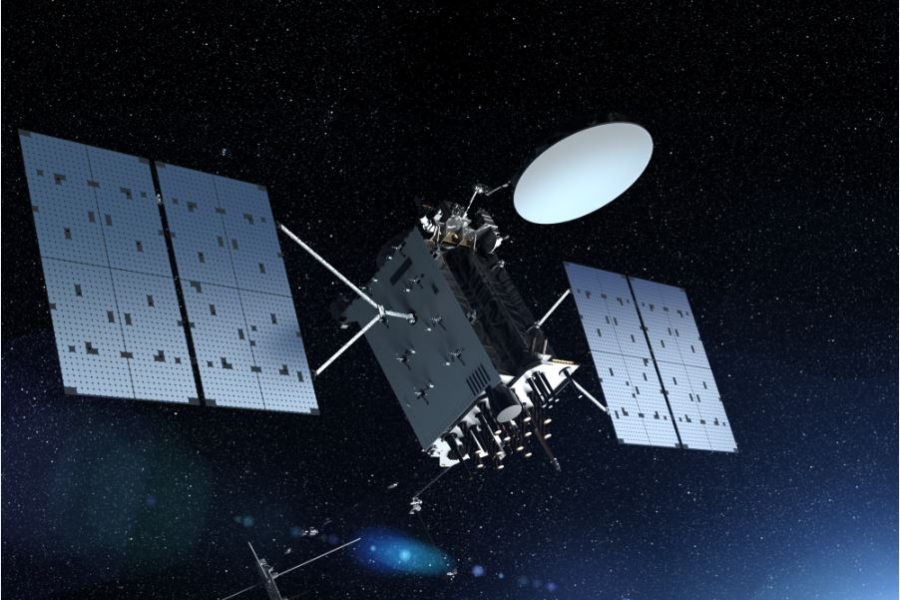
House Appropriators Want to Cut the Space Force Budget Even More (Image Credit: airandspaceforces)
The Space Force, already facing its first-ever budget cut in fiscal 2025, would face an additional 3 percent cut if House appropriators get their way. The combined cut would be 5 percent compared to 2024.
In their version of the 2025 defense appropriations bill, House lawmakers moved to slash $900 million from the Space Force’s proposed $29.6 billion budget, primarily in procurement and research and development.
| Account | Requested | House Appropriations |
|---|---|---|
| Military Personnel | $1.378 billion | $1.376 billion |
| Operations & Maintenance | $5.292 billion | $5.146 billion |
| RDT&E | $18.7 billion | $18.277 billion |
| Procurement | $4.263 billion | $3.934 billion |
| TOTAL | $29.633 billion | 28.733 billion |
The biggest single cut would hit GPS III, with lawmakers seeking to save $185.9 million by cutting the buy from two to one satellite in 2025, lawmakers project.
The House Armed Services Committee proposed a similar cut in its draft of the 2025 National Defense Authorization bill. Reducing funding for the more robust GPS IIIF comes as the Space Force eyes alternate solutions for providing position, navigation, and timing from space. In February, Space Systems Command solicited industry for ideas on smaller, cheaper satellites that could rapidly go into orbit to test new technologies, and in April, the Department of the Air Force announced it was taking advantage of new “quick start” authorities from Congress to work on a jam-resistant PNT solution.
The program, initially dubbed GPS Lite, is now called Resilient GPS. But while House Armed Services Committee members expressed enthusiasm for the idea, appropriators remain skeptical. “The Committee has several concerns about the R-GPS plan and the use of this authority for this project,” lawmakers wrote. They questioned:
- How the new satellites—about 20 in total—would solve issues of jamming if they use the same GPS signals existing satellites do
- What the new solutions would mean for ground equipment and how that would help defeat jamming threats
- Whether Resilient GPS should have followed the regular budget process and whether the department is trying to “dodge the congressional appropriations process to exercise this new, extraordinary authority.”
Lawmakers rejected the Space Force’s request to reprogram $77 million for Resilient GPS in the 2025 budget.
Lawmakers pushed back on other programs, as well. Missile warning/missile tracking satellites were among the major areas of investment in the Space Force budget request, to the tune of $4.7 billion. The House appropriations bill would trim more than $150 million from that. Among the cuts: $54.5 million for the Space Development Agency’s MW/MT efforts in low-Earth orbit, and $95.9 million for Space Systems Command’s MW/MT constellation in medium-Earth orbit, citing “vendor termination.”
An SSC spokesman, asked if the command is cancelling an existing contract or reducing requirements for a future one, declined to comment on pending legislation.
Evolved Strategic SATCOM, a new nuclear command, control, and communications satellite constellation, would be cut bu $44 million, while Protected Tactical SATCOM, for jam-resistant communications, would be cut by $85 million, including some reprogramming of funds at the Space Force’s request.
Budget Issues
Appropriators used the bill report to express frustration with how the Space Force budget is organized, complaining that “the Space Force funds a significant portion of its overhead expenses through taxes on programs in the procurement and the research, development, test, and evaluation accounts.” The report said the practice “the report notes. “This practice “distorts the budgets for the programs … and obscures the true overhead cost of the Space Force.”
The seek a report from the Secretary of the Air Force on how the Space Force defines overhead costs and a breakdown of its overhead “tax” on each program.








